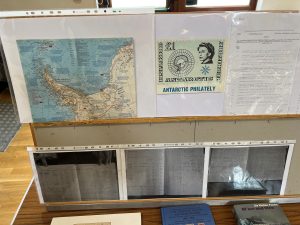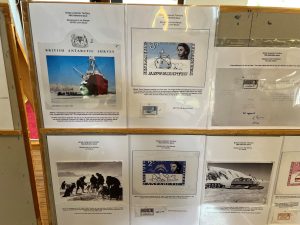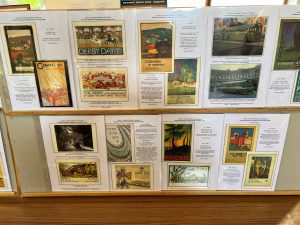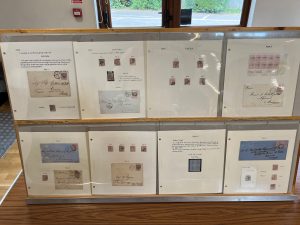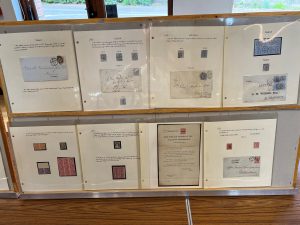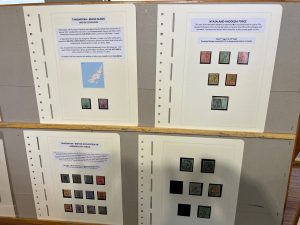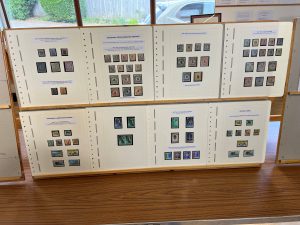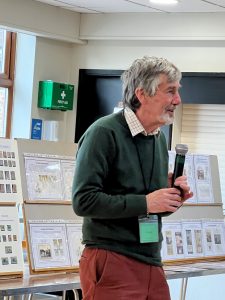The afternoon’s displays by members of Redhill Philatelic Society began with Robert Hurst who took as his subject the first definitive stamps of British Antarctic Territory (BAT) issued on 1st February 1963. Starting with copies of some of the photographs that inspired the designs and the reviews that were a part of perfecting the engraving of the printing plates, the exhibit progressed via the issued stamps, to postal rates and usage of the stamps from post offices at the British scientific bases, before looking at the decimal overprints on the designs. The display rounded off with the 2013 BAT definitive issue that marked the 50th Anniversary of the first stamp issue for the Territory using a stamp on stamp design that reprised the original set.
Edward Walker showed GB Queen Victoria surface printed stamps with values from 3d to 10d, which were introduced from 1855. The stamps were produced by De La Rue, which was a departure from the line engraved stamps which up till then had been printed by Perkins Bacon. He explained the reasons for all the various changes in colour, illustrating his display with blocks, covers and various colour trials and essays.
Rodney Pomfret chose to show a mix of traditional and more modern material. The presentation started with Tanganyika chosen for its variety, including GEA overprints, and stamp issues featuring giraffes rather than the monarch’s head, plus some beautifully designed pictorial stamps. As a lover of maps and in contrast to Tanganyika, Rodney continued his display with a set of covers celebrating 200 years of the Ordnance Survey, to illustrate the fact that an attractive thematic display can be produced with little cost and modern stamps can be as appealing as older ones.
